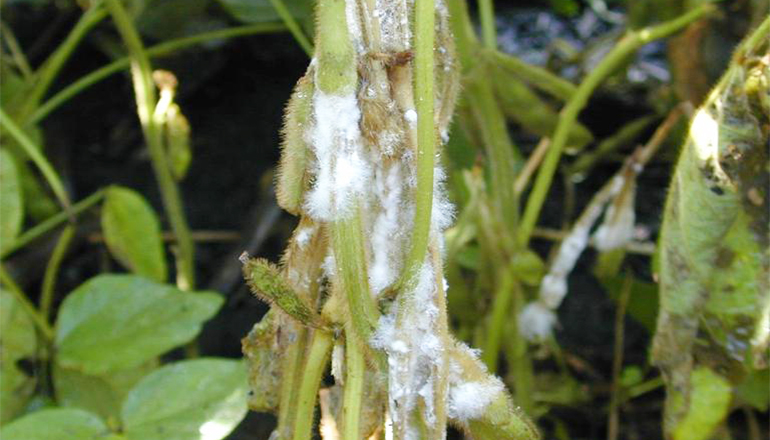University of Missouri Extension agronomy specialist Wayne Flanary says about 160 acres of soybean in northwestern Missouri show symptoms of Sclerotinia stem rot. The MU Plant Diagnostic Clinic confirmed the disease, which can cause large losses in fields with high yield potential.
Also known as white mold, Sclerotinia stem rot is rare in Missouri. This stem and root disease is usually found in the northern part of the soybean belt.
According to an Extension news release, retired MU plant pathologist Laura Sweets says the white mold first shows as a wilting of leaves in the upper canopy.
“Leaves may have a gray-green or off-color and wilted appearance,” she says.
White mold often grows on stems and leaves. The disease favors moderate canopy temperatures (less than 82 degrees) and frequent rainfalls that cause high humidity in the canopy.
Research shows Sclerotinia stem rot can remain in the soil for years, MU Extension soybean specialist Bill Wiebold says. Iowa researchers recommend planting two years of corn to reduce viable seeds, although there are no guarantees.
There are effective fungicides, but spray timing is critical to success. Apply fungicides during flowering (R1 and R2 development stages), Wiebold says. Harvest infected fields last, and clean out the combine to prevent spread. He also recommends no-till production for three to four years.







